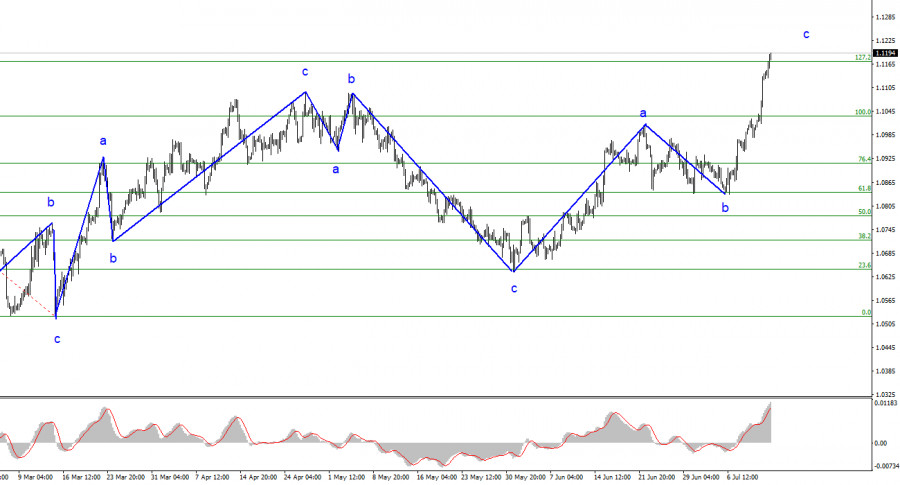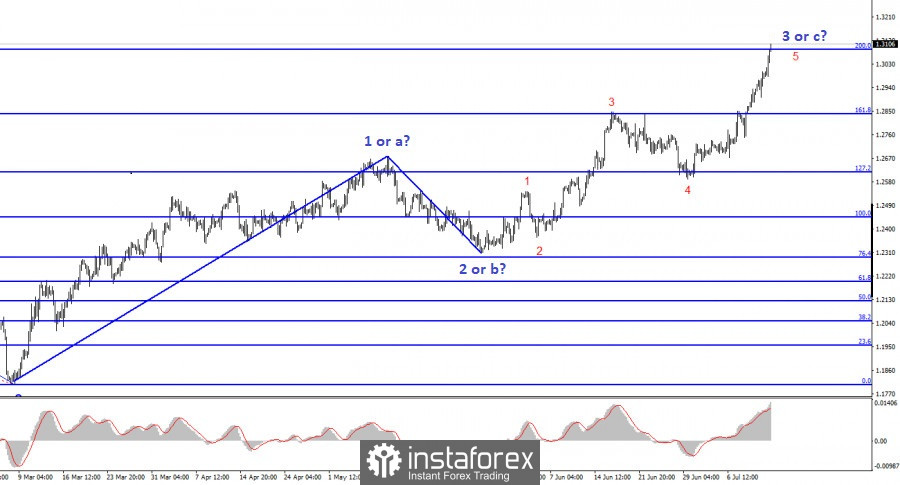
Not only is the demand for the US currency decreasing, it's practically falling every day. The EUR/USD pair increased by 220 points this week, the GBP/USD pair by 270, if calculated from the week's opening point. At first glance, it may seem that the dollar losses are not frightening, but it continues to fall even when there are no reasons for it to do so. We are all used to the idea that market movements rely on economic data, daily events that help determine direction within each day. Sometimes there are strong background events, thanks to which one or another currency can grow every day, but this growth is not expressed in three-digit numbers.

Having analyzed the situation again, I came to the conclusion that the dollar's problem may lie in rapidly falling inflation. If inflation has already dropped to 3%, then the Federal Reserve has no need to continue policy-tightening in 2023. Perhaps there will be another "control shot" at consumer prices, and the rate will rise to 5.5%. But that's it. The second point - if inflation is approaching the Fed's target, then monetary easing may begin as early as 2023. In the case of the European Central Bank and the Bank of England, if the rate does finish rising in the coming months, it is not possible to talk about policy easing in the context of the near-term perspective.
In my opinion, this is a rather dubious explanation for the falling demand for the US currency, but there is no other! The ECB and the BoE will sooner or later also cease tightening and move to easing, and this time may come even sooner than it seems now. After all, in the UK and the EU the question of recession remains open. US GDP grows by 2-3% each quarter, whereas in Europe and the UK, growth has been absent for several quarters. And the higher the rate goes, the more "negative" economic growth will be. And I believe this factor should also be taken into account.
Based on all of the above, the euro and pound can extend its upward movement for some time. This can be explained as the "final impulse" of the market, which understands that it has placed both instruments in overbought territory. However, it's impossible to predict when most market participants will decide to take profits and close long positions. I believe that now it is necessary to carefully monitor the situation and try to respond to it as quickly as possible. There aren't really any other options. Both wave markings allow for a build-up of a descending set of waves, but we know that any wave structure can be complicated. And the current news background provides no help or benefit. There were plenty of weak economic reports from the EU and Britain this week.

Based on the analysis conducted, I conclude that the uptrend build-up is still in progress, but it can end at any moment. I believe that targets around 1.0500-1.0600 are quite realistic, and I advise selling the instrument with these targets. However, now we need to wait for the completion of the a-b-c structure, and afterwards we can expect the pair to fall into this area. Buying is quite risky. The euro uses any opportunity to rise, but the news background for the dollar is not as weak as it may seem.
The wave pattern of the GBP/USD pair suggests the formation of an upward set of waves. Earlier, I advised buying the instrument in case of a failed attempt to break through the 1.2615 mark, which is equivalent to 127.2% Fibonacci, and then open long positions while aiming for targets around the 1.3084 mark, which corresponds to 200.0% Fibonacci. Now all targets have been achieved, but a successful attempt to break through 1.3084 can lead to a new momentum with targets located around 1.3478 (261.8% Fibonacci).